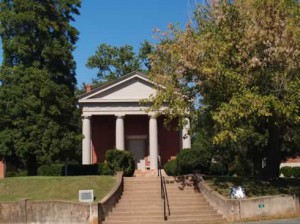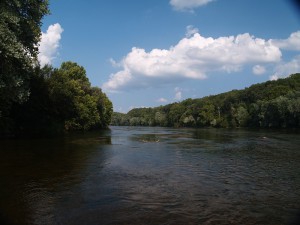
Fluvanna County is east of Charlottesville land, with a county of over 25,000 people. It’s conveniently located between Cville and Richmond, two distinct hubs of culture and commerce. Present day Fluvanna’s land was part of Henrico County. In 1727, Henrico split and the land became part of Goochland. It was then passed on to Albemarle County in the wake of another split, and finally became Fluvanna County in 1777 during a pivotal time in U.S. history, just a year after the ratification of the Declaration of Independence. “Fluvanna” is the name given to the James River once it’s west of the city Columbia. It means “Anne’s River”; its namesake is Queen Anne of England. The Rivanna River also flows through the county. Here’s a little bit about some of Fluvanna’s communities.
Bremo Bluff
Sitting on the northern bank of the James River, Bremo Bluff was established by the Cocke family all the way back in 1636! At least, that’s when Richard Cocke received a land patent for 3,000 acres along the James. He named it Bremo Bluff in honor of Braemore, the family’s historical home in the United Kingdom. Confederate General Robert E. Lee visited the community during the Civil War; his wife Mary Custis Lee would stay there occasionally, eager to leave the stressful environment of wartime Richmond.
Columbia
At one time it was the last independent town entirely on Fluvanna County land. Columbia dates back to at least 1788, when it was a stagecoach road situated between the cities of Staunton and Richmond. It’s at the confluence of the Rivanna and the James Rivers. Once called Point of Fork, it was the site of a small battle during the Revolutionary War. It was an incorporated community with a mayor until 2015, when it was deincorporated and reabsorbed by Fluvanna County.
Fork Union
Although Columbia is closer to the titular fork, the name of this town is likely a reference to the point at which the Rivanna and the James meet. It’s known for having the only Presbyterian congregation in Fluvanna, and one of the last remaining drive-in theaters in the entire state. It’s also home to Fork Union Military Academy, a private, all-male military boarding school with Baptist affiliation.
Kents Store
We can’t say for sure, but if we had to guess…there was a guy named Kent. He probably owned a store.
Lake Monticello
This is by far the most populous locale in Fluvanna County, with a population of over 9,000. It’s essentially a commuter town for the nearby city of Charlottesville on land 15 miles southeast of the hub. To a lesser extent, it serves the same purpose for Richmond. There’s also a significant part of the population that is retirement age. It’s centered on a lake of the same name.
Palmyra
On the eastern bank of the Rivanna, Fluvanna’s county seat is Palmyra. Its population was only 104 in the 2010 census, but its postal area, the “Greater Palmyra area” is much more populous as it includes the Lake Monticello community. Palmyra was once owned by the Timberlake family. In 1814, Rev. Timberlake had a five-story brick grist mill built, and he it called Palmyra Mills, hence the name. The mill was burned by Union troops in 1865. The Timberlake family and their relatives the Shepard family owned all but four acres of Palmyra until 1854. They leased the 41 other residences, and only they were allowed to own property in a bizarre, quasi-feudal experiment.

Scottsville
Last but definitely not least is Scottsville, the only independent town in Fluvanna. Technically, Scottsville is on land in Fluvanna County and on land in Albemarle County. Early on, in the 18th century it was the westernmost extension of Virginia trade and government, situated on the James River at a point when rivers were the most efficient way to travel long distances. It was originally called Scott’s Landing, and we can only assume someone named Scott landed, or something. Scottsville was very much in the mix when it came to culture and commerce in central Virginia after the Civil War; lots of money from the Shenandoah Valley was coming in, because of a wagon road which linked the town Staunton, and because of its prime location just 19 miles south of Charlottesville land. At one point it was the largest grain market in the state of Virginia. Its proximity to the James is both a blessing and a curse: Scottsville has flooded 21 times since 1870!

